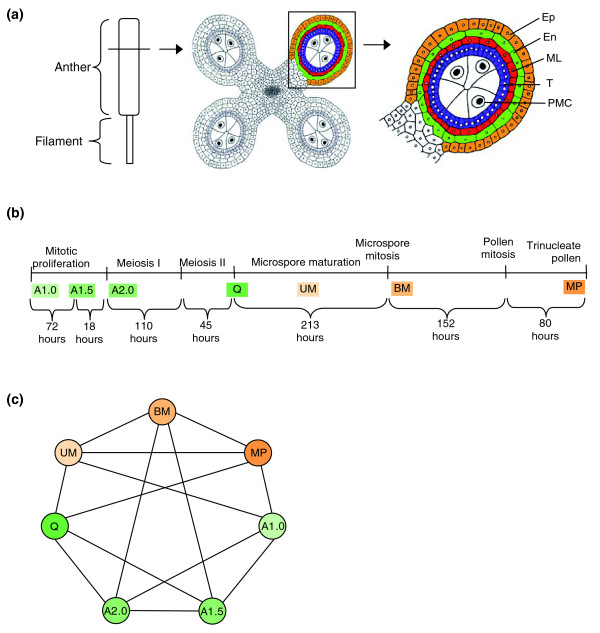Figure 1.
Anther ontogeny. (a) The male reproductive organ (stamen) is composed of an anther and a filament. In transverse section a mitotic (1.0 mm stage) maize anther has a characteristic four lobed structure. As cell fates are established four concentric rings of somatic cells surround presumptive meiotic cells by the 1.5 mm stage. Ep, epidermis; En, endodermis; ML, middle layer; T, tapetum; PMC, pollen mother cell. (b) A timeline of anther development. The top line provides developmental landmarks. Anthers were collected at the stages indicated in the second line: A1.0, mitotic anther; A1.5, anther at the cessation of mitotic proliferation with the central cells about to enter meiosis or at the beginning of prophase I; A2.0, central cells at pachytene of prophase I; Q, quartet stage of microspores, immediately post-meiotic; UM, uninucleate haploid microspore; BM, binucleate microspore; MP, mature pollen. The temporal separation between the developmental stages is indicated (in hours) below the line [6]. (c) Global gene expression analysis of maize anthers and pollen. Array hybridization design scheme. Four independent biological replicates with balanced dye labeling (two Cy-3 and two Cy-5) were hybridized for each stage. Each line connecting two samples represents one array hybridized with these samples. For tissue stage information see (b). The progressively darker green samples represent early anther development; the quartet stage marks the end of meiosis; the two anther maturation stages and mature pollen are in progressively darker orange.

